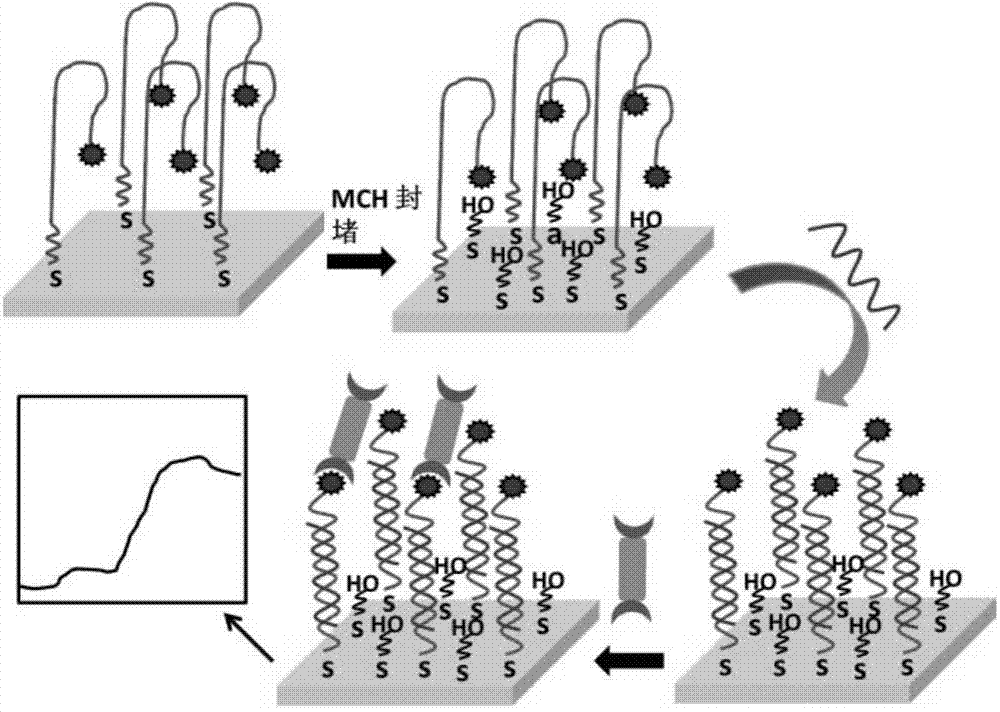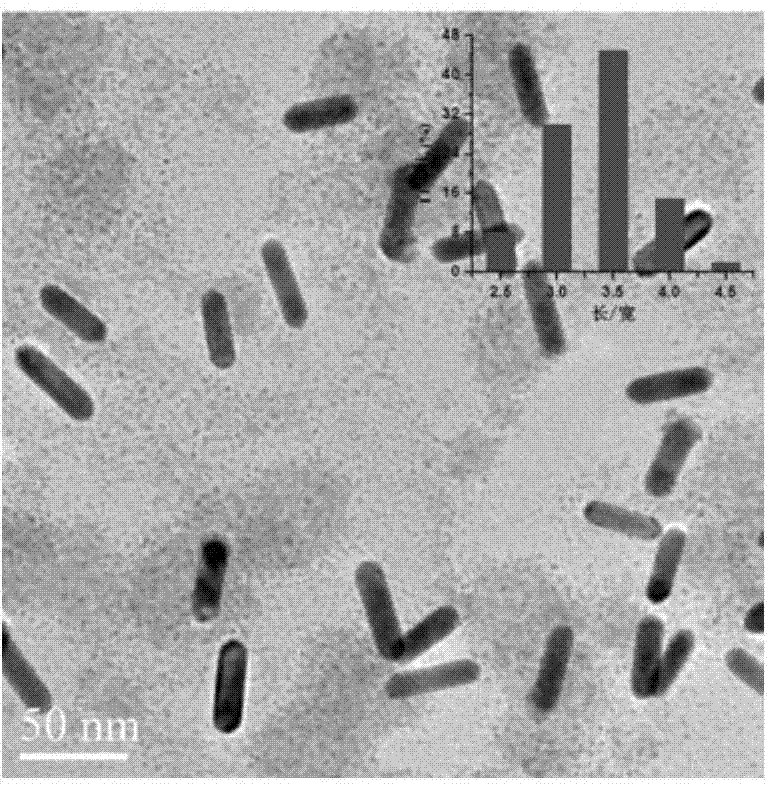Surface plasma resonance (SPR) sensor chip as well as preparation method and application thereof
A surface plasmon and sensor chip technology, applied in the field of medical detection, can solve the problems of low expression abundance, lack of common features, difficult detection, etc., and achieve the effects of good test effect, stable test effect and simple use method.
- Summary
- Abstract
- Description
- Claims
- Application Information
AI Technical Summary
Problems solved by technology
Method used
Image
Examples
Embodiment 1
[0046] 1. The method of sputtering a gold film with a thickness of 40-60 nm on the glass slide is:
[0047] (1) Place the BK7 slides at 80°C in piranha (H 2 o 2 with concentrated H 2 SO 4 Mixed solution with a volume ratio of 1:3) for 30 minutes, after cooling to room temperature, the slides were rinsed with deionized water, N 2 blow dry;
[0048] (2) Place the cleaned glass slide in a vacuum coating machine for coating:
[0049] a) First coat a layer of 2 nm thick chromium film;
[0050] b) Continue to plate a 50 nm thick gold film on the chromium film.
[0051] 2. Chip preparation:
[0052] (1) Rinse the clean gold film with 100% ethanol and then with deionized water, and finally wash it with N 2 Air dry for later use.
[0053] (2) Prepare 0.1 μM biotin-miRNA probe solution, which contains 2 μM TCEP in PBS solution (0.1 M, pH 7.4).
[0054] (3) Drop 25 μL of biotin-miRNA probe solution onto the prepared gold membrane and leave it overnight at 4°C.
[0055] (4) Aft...
Embodiment 2
[0080] 1. Preparation of gold film:
[0081] (1) Place the BK7 slides at 80°C in piranha (H 2 o 2 with concentrated H 2 SO 4 Mixed solution with a volume ratio of 1:3) for 30 minutes, after cooling to room temperature, the slides were rinsed with deionized water, N 2 blow dry;
[0082](2) Place the cleaned glass slide in a vacuum coating machine for coating:
[0083] a) First coat a layer of 2 nm thick chromium film;
[0084] b) Continue to plate a 50 nm thick gold film on the chromium film.
[0085] 2. Preparation of chip: Same as Example 1.
[0086] 3. Preparation of GNRs-streptavidin
[0087] Use 1-ethyl-(3-dimethylaminopropyl) carbodiimide hydrochloride (EDC) to activate the carboxyl group of lipoic acid (TA), then combine with the amine group of streptavidin, the The procedure for end-binding of GNRs and streptavidin is as follows: first, 3 mL of redispersed GNRs solution was added dropwise to 6 mL of diluted streptavidin (2×10 -8 M) solution, shake lightly for ...
Embodiment 3
[0097] The steps for specific detection using the miRNA sensor obtained in Example 1 are:
[0098] (1) Inject 20 nM of target miRNA sequence, single-base mismatch sequence and three-base mismatch sequence on the surface modified by biotin-miRNA probe respectively, the steps are the same as 4 in Example 2, and record the corresponding SPR response signal.
[0099] (2) The regeneration steps of the sensor refer to Embodiment 2.
PUM
| Property | Measurement | Unit |
|---|---|---|
| Thickness | aaaaa | aaaaa |
| Thickness | aaaaa | aaaaa |
Abstract
Description
Claims
Application Information
 Login to View More
Login to View More - R&D
- Intellectual Property
- Life Sciences
- Materials
- Tech Scout
- Unparalleled Data Quality
- Higher Quality Content
- 60% Fewer Hallucinations
Browse by: Latest US Patents, China's latest patents, Technical Efficacy Thesaurus, Application Domain, Technology Topic, Popular Technical Reports.
© 2025 PatSnap. All rights reserved.Legal|Privacy policy|Modern Slavery Act Transparency Statement|Sitemap|About US| Contact US: help@patsnap.com



